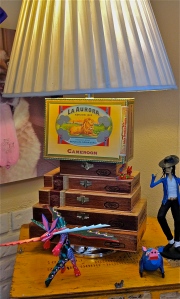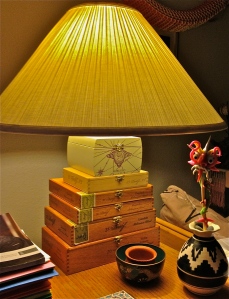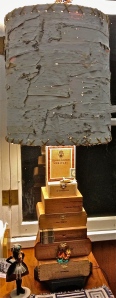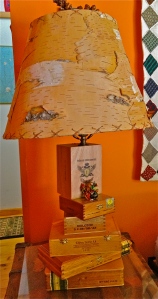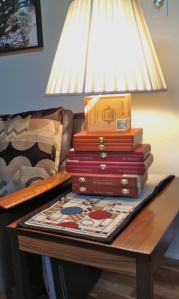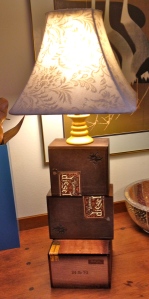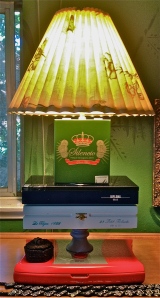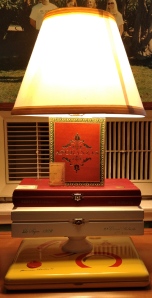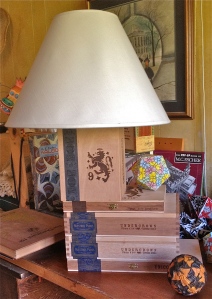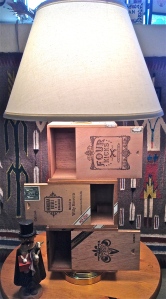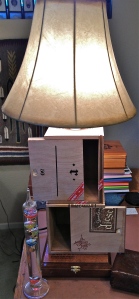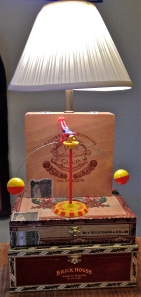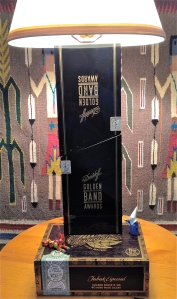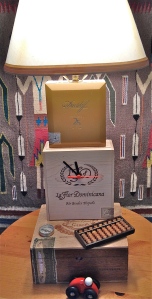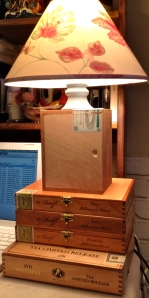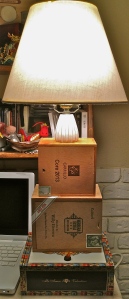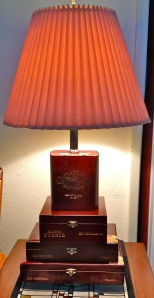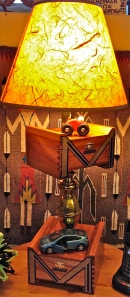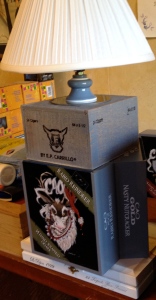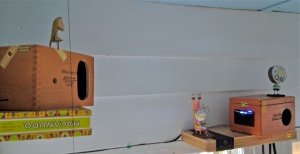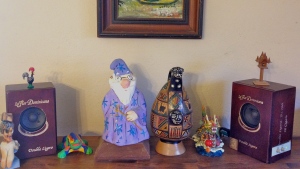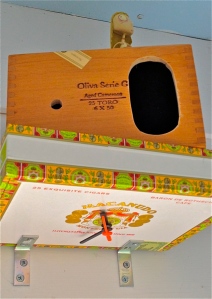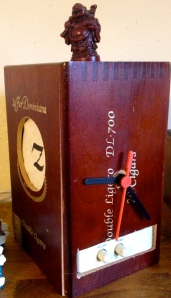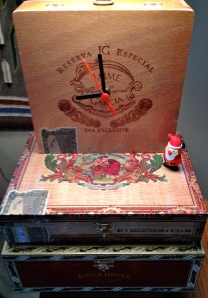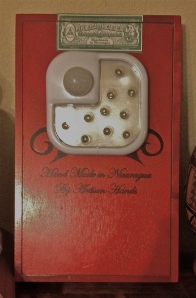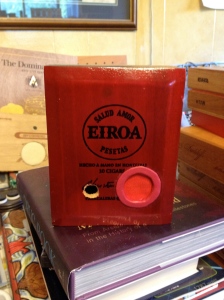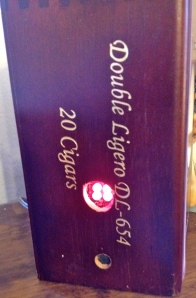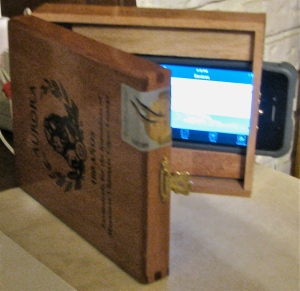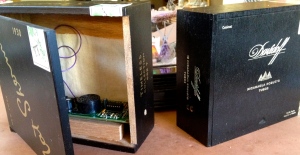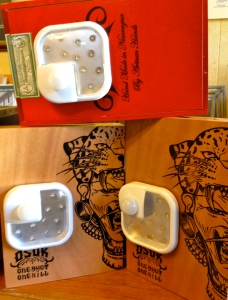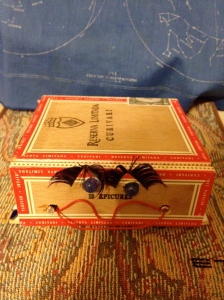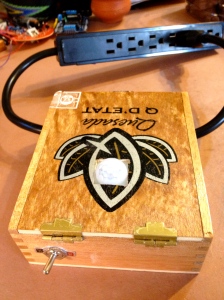My current passion is to restore a 1968 Gottlieb electromechanical (EM) pinball machine to the theme of Paul Bunyan. We chose this machine primarily because it has 6 flippers, giving us a better chance to keep the ball in play. After searching for six months or so, a pinball enthusiast (Cliff Rinear) I had contacted, spotted one for sale near Modesto California. After looking at a few pictures and talking with the ‘owner’, I gave him $325 sight unseen. Jessie and I drove up to get it, in my Prius. Seeing it, I was having serious second thoughts and had I not already purchased it, … It had been stored for 30 years without the playfield glass or a back cover, the paint flaked off in our hands when we lifted it. After a month or so the cosmetic part is essentially complete. Most of the game features work. I’m hopefull! Here are some pictures:
First my copy art … there are those purists who will say that I have gone beyond the acceptable limits of responsible restoration. Oh well …
The Right side of the Wedge.

The Left side of the Wedge.
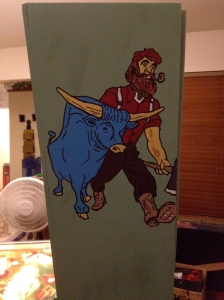
The Back of the Wedge.
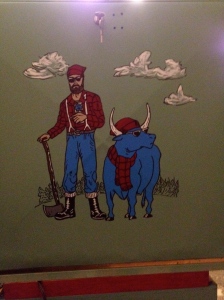
The Sides of the Playfield.
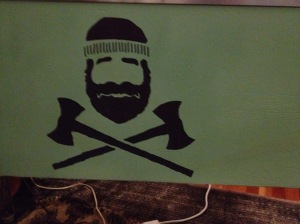
And now for the machine:
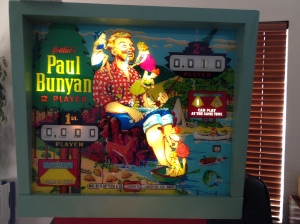
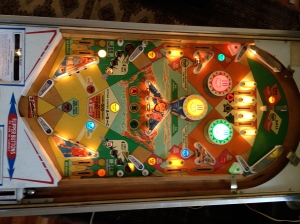
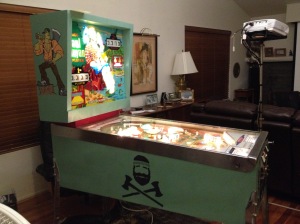
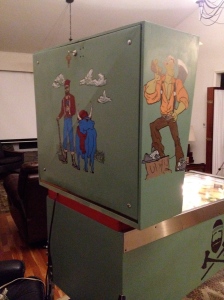
I have spent the last year bringing it back to life. EVERY feature now works! All lights are switched to LEDs. The coin chute works, but is not required. All free game conditions work. Now I’m customizing.
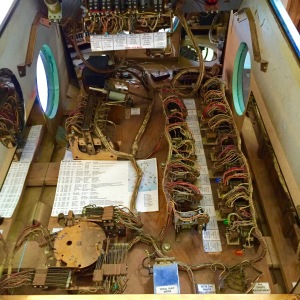
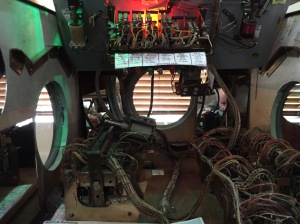
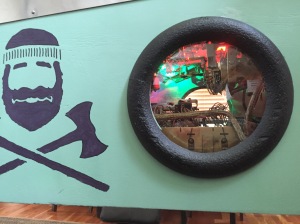
You can see the portholes and mirrors that are added for spectator viewing. I had considered making a transparent cabinet, but decided that it was beyond my capabilities. I’ve added labels to all major components and a few LEDs to give a small light show.
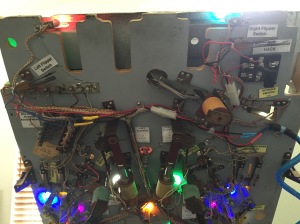
From this view of the Playfield bottom you can see the area of my flipper hacking. The purpose of the next phase is to make the machine handicap accessible. The first step is to add a Flipper crossover, which causes all 6 flippers to respond to either flipper button. That hack is complete and can be seen upper right in the photo. I love using knife switches and have used them in all hacks to date.

This view of the back of the wedge head shows some additional hacking that I’ve done. I have a Tens and Hundreds bells hack that permits silencing those bells. There is a free game hack for bypassing the 10 cent coin chute. All of my hacks are reversible with the throw of a knife switch.
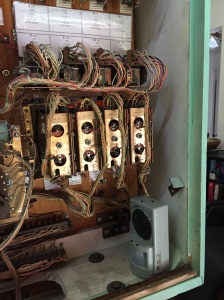
My most recent hack is to add audio to the playing experience. The audio is provided by a hacked security device, sitting in the lower right of the picture above. This Recorder/Player is attached to a New contact that I added to the 1000 point relay. When a 1000 point addition is achieved the recorder plays a version of “The Lumberjack Song” by Monty Python:
I’m a lumberjack and I’m OK. I sleep all night and I work all day.
I cut down trees, I skip and jump. I like to press wildflowers.
I put on women’s clothing and hang around in bars.
I cut down trees, I wear high heels, suspendies and a bra.
I wish I’d been a girlie, just like my dear Mamma.
I’ve added several additional features:
A mild verbal chiding has been added following a TILT.
Sip action is complete. Sip and Puff are alternative choices – you can’t have both at the same time. I went with Sip on both Sensors, but changes are easily made
Wii Nunchuck control has been completed. The accomplishment of this feat involved using a Arduino Pro Mini with software. I used the switch and joystick actions to control the right and left flippers. I made no use of the 3-axis accelerometer data (see what’s next list below). The software has the values and they will be used in other applications.
Here are a number of images showing the accomplishment of remote control of my Pinball machine:
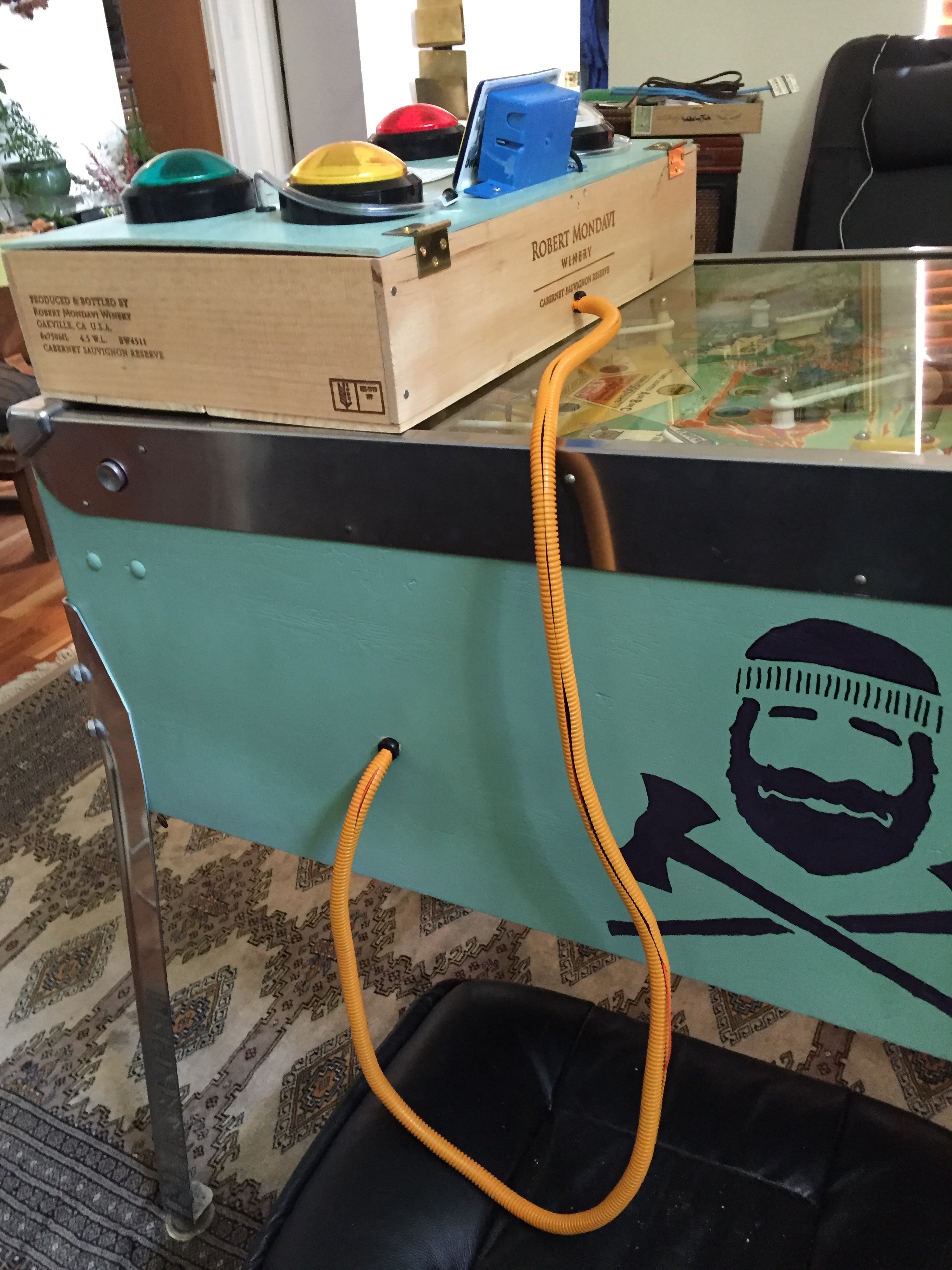
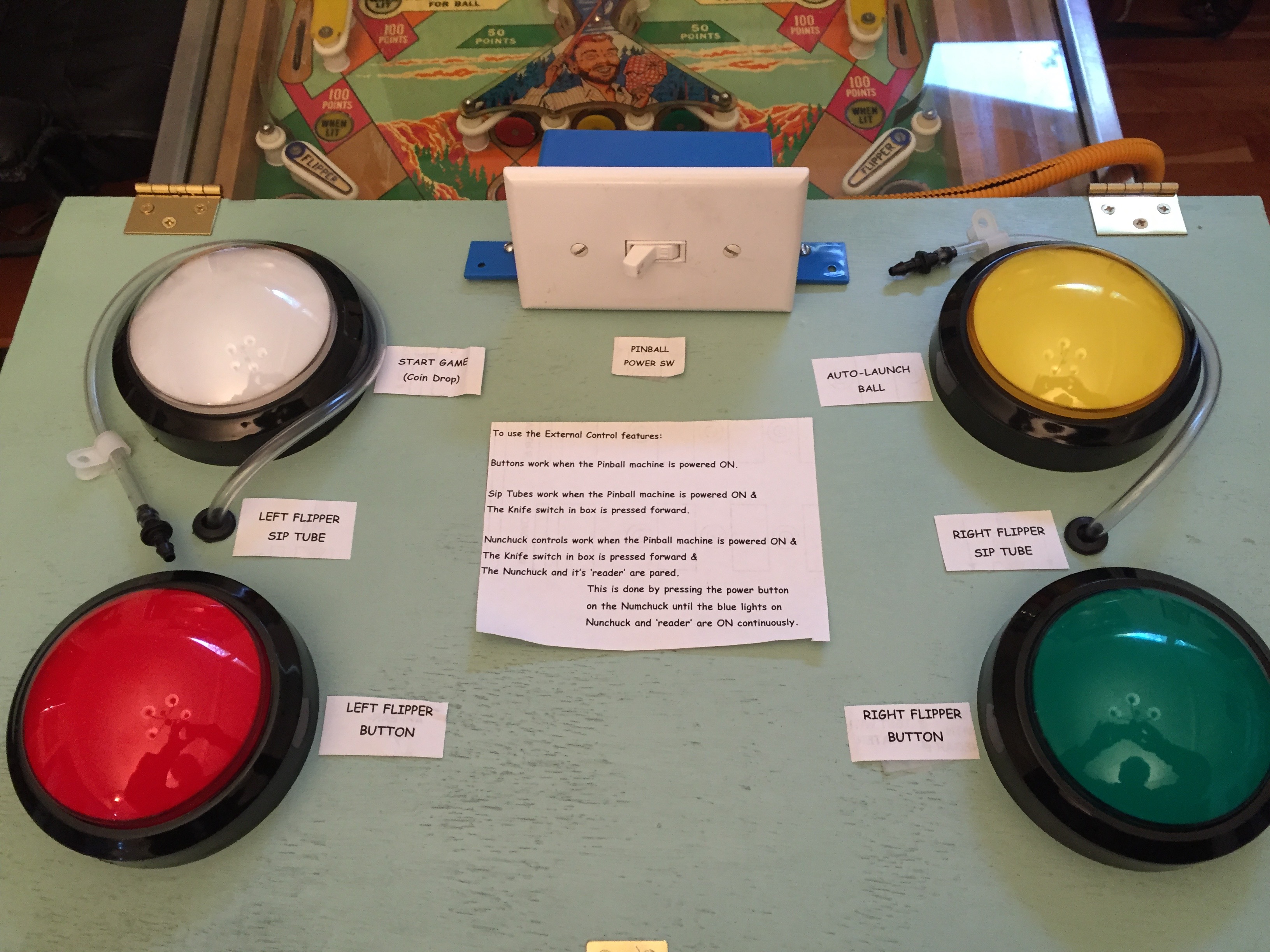
The Red and Green buttons and associated Puff/Sip tubes control the flippers, the White button controls the Replay Button, and the Yellow button will control the ball plunger (yet to be implemented).

Inside the box: Only the fearless dare to tread here …

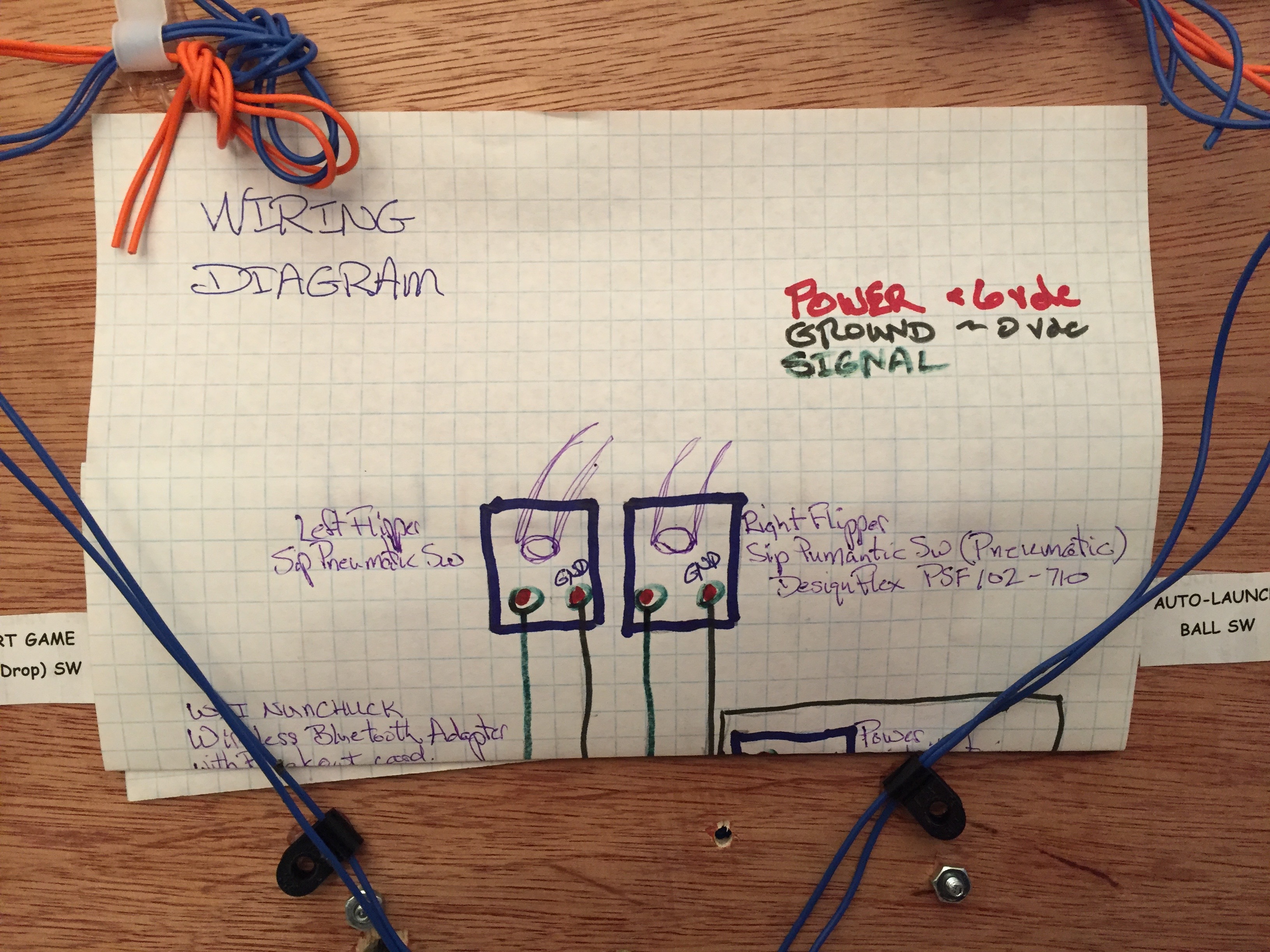


The hose connector to the Right is for Puffing (a higher pressure)

Inputs and Outputs of the Relays are indirectly from the normal Flipper switches.

Nice Remote Control Device, via BlueTooth.

Well I haven’t done any of the above, but I did come across a sound sensor and decided to add sound triggering of the flipper control circuit.

The sound board with power and relay controls is installed.

The sound capture is installed, but the whole thing does not function properly. I’ll have to ponder this one for awhile.
Next hacks:
I’ve found a IR sensor that will respond to any click on any remote control, I may install that next.
I’ve been considering adding head-tilt as a control of the flippers. It would be easy to implement, actually only 2 lines of code since the accelerometer values are read in with all the others. The problem is that the accelerometer values are very sensitive to giggling and random movement. Filtering would be the answer, confirmation, or smoothing, or … Once this is working, other movements can be added; like winking, or …
I want to add a solenoid and hardware for remotely actuation of a ball plunger; without hopefully interfering with the manual plunger. It’s not as if it’s never been done. There are a number of Stern machines that use a Auto-Launch assembly. I can get a new one for $80, but am advised that considerable modifications to my cabinet may be required. Not that I am haven’t done that already.





































